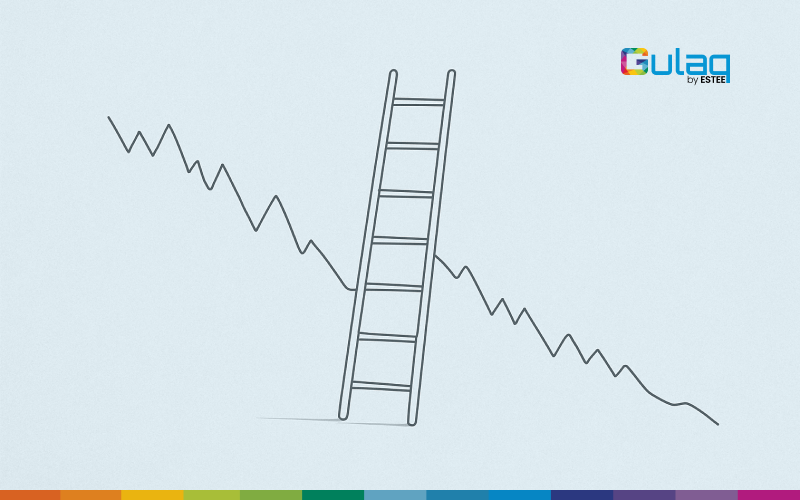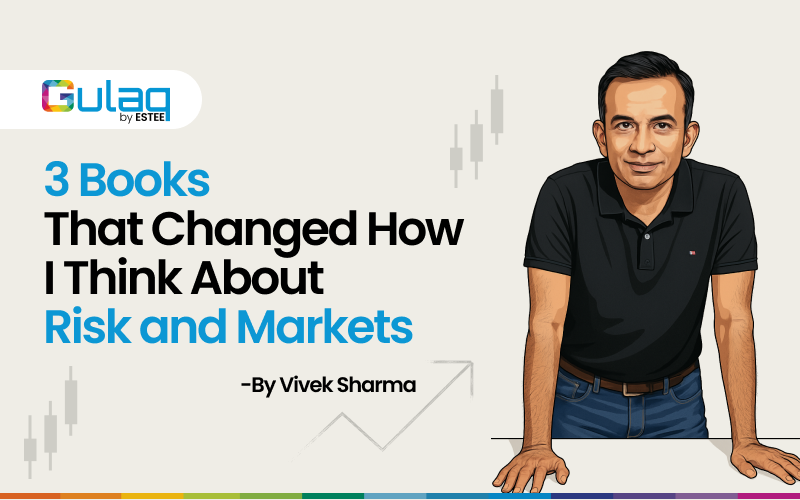
Investing with Confidence by Prioritizing Fundamentals in Volatile Markets
Investing in the stock market is a roller-coaster ride. Recent global trade tensions, heavy outflows from foreign institutional investors (FIIs), and weak corporate earnings have all contributed to an environment of heightened volatility. Weak inflow data from AMFI further indicates that investors are increasingly hesitant to commit capital.
However, volatility is not something to fear. By adopting a fundamental approach, investors can turn market chaos into a ladder for long-term wealth creation.
Investors often confuse volatility with risk. While the two terms are related, they are fundamentally different.
Volatility refers to the day-to-day price fluctuations we observe in the market—these ups and downs are a normal and inevitable part of investing. When fear grips the market, these price swings tend to intensify, but that doesn’t necessarily mean your risk has increased. Risk, on the other hand, is the probability of actually losing money on your investment, especially over the long term.
Understanding this distinction is important because investors who hate risk might actually love volatility. While volatility can expose your portfolio to wild short-term swings, it also creates opportunities to buy quality businesses at attractive prices. As the saying goes, chaos is a ladder—periods of market chaos can open the door to accumulate businesses with strong fundamentals at low prices.
During volatile times, fundamental analysis serves as an anchor. It helps investors focus on the intrinsic value of assets rather than get swept away by short-term price fluctuations.
A business’s fundamentals are quite robust—they don’t change easily. So while price may fluctuate heavily, the core of the business often remains intact. This disconnect between fundamentals and market price creates valuation anomalies that disciplined investors can exploit.
However, spotting and acting on these opportunities is easier said than done. In volatile markets, pessimism runs high, and prices become hypersensitive to news. How you interpret fundamentals depends on the lens you’re using. If that lens is clouded by fear, it becomes difficult to see clearly—and you may discard gold, thinking it’s dust.
That’s why it’s so important for investors, especially during turbulent times, to remain objective and maintain a long-term mindset. In the short run, markets tend to have a negative bias. But in the long run, the bias is positive. Historical data shows that while short-term fluctuations can be extreme, markets have generally risen over time—even after severe shocks like the Global Financial Crises or the COVID pandemic. A long-term perspective allows you to see opportunities more clearly and act on them with confidence.
Focusing on fundamentals also helps avoid bad businesses. In investing, success depends more on avoiding poor investments than on making brilliant ones. Weak businesses often have flawed fundamentals and tend to fall sharply in volatile markets. This decline can create the illusion of undervaluation, and many investors jump in too quickly. By analyzing the underlying business and its intrinsic value, you can assess the fall more objectively—and avoid impulsive decisions.
Excessive volatility often triggers emotional responses that lead to suboptimal decisions. Common behavioral traps include panic selling during declines, chasing performance after price spikes, and reacting impulsively to news flow. These habits tend to erode long-term returns by causing investors to buy high and sell low.
Research consistently shows that investors who react emotionally and chase performance underperform those who remain disciplined. By recognizing these behavioral tendencies and setting up structures—such as predetermined investment rules and scheduled portfolio reviews—you can protect yourself from costly mistakes and navigate market turbulence more confidently.
Volatility isn’t the villain—it’s a test of your investment discipline. With fundamentals as your guide and patience as your ally, you can turn market chaos into your ladder for building lasting wealth. As Warren Buffett wisely advises, “Opportunities come infrequently. When it rains gold, put out the bucket, not the thimble.”
Related Posts
Smart Beta Strategies: What Investors Should Know Before Investing
Smart Beta Strategies: What Investors Should Know Before Investing As of August 2025, Indian mutual…
Process Matters More Than Outcome
I have spent nearly a decade of my life trading energy derivatives, and today I…
Is Market Cap the Best Way to Build an Index?
Nifty 50 is a free-float weighted index – a slight variation of market cap weighted…
3 Books That Changed How I Think About Risk and Markets
Over the past two decades, I’ve built a quiet but consistent habit — reading. Not…








